Mono Lake may be a million years old. Conservative estimates put it at 750,000 years. Once part of an inland sea, the lake, which covers about 69 square miles, is a shadow of its former greatness.
It’s still great, though.
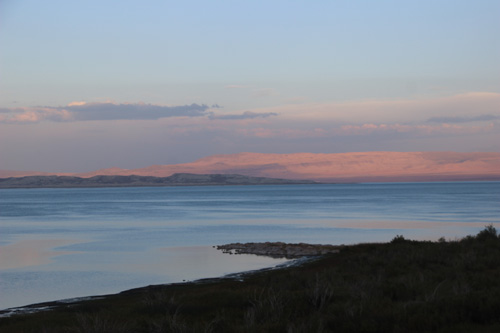
Throughout the year the lake is a stopover and home to over 2 million shorebirds. Eared grebes make a regular stop in November. The Mono Basin Visitor Center data states that nearly 80% of the Southern California seagull population is born at Mono Lake. The high-salt lake has no fish, just brine shrimp and alkaline flies and their larvae, enough to feed millions of birds–and support a tropical-fish-food business by humans, who harvest the brine shrimp as well. The local Piute tribe who inhabited the lake region originally also used the fly larvae as a staple protein in their diets.

As the water receded, strange configurations appeared; towers formed by the interaction of the highly mineralized water with the water from the springs that fed the lake. These limestone constructions are called tufas.
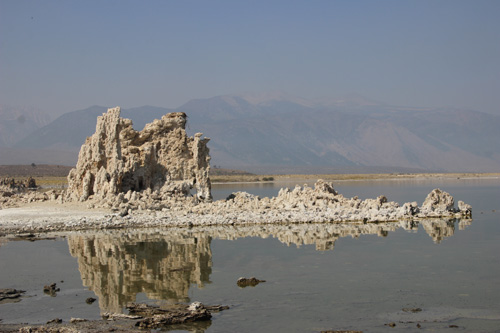
The best place to view the tufa up close is South Tufa, about five miles south of the town of Lee Vining. Turn left off of Highway 395. There are two viewing areas; South Tufa, which has a kiosk and some information posted on the unstaffed station, and a well-laid-out trail, and Navy Beach, about one mile east, which is more primitive but has the sand tufas. Sand tufas are more ethereal.
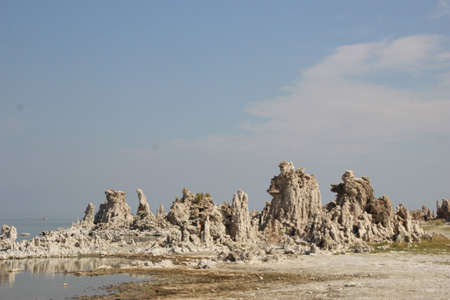
Warning signs say the tufa are fragile. They aren’t that fragile, but millions of people a year come see them, year after year, and that many human hands would wear them down, so don’t touch. It’s hard not to touch the knobby surfaces, some white, some dark brown, others sparkling with salt, but resist the temptation.
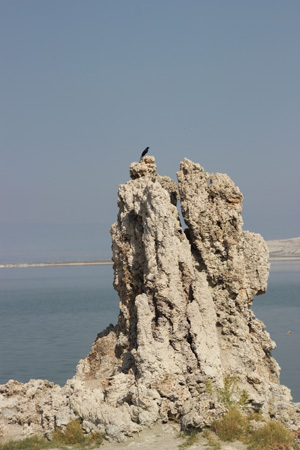
Ospreys nest on the tufa that out in the lake. Even though there is no food in the lake for them, the tufas are completely isolated from predators, and the parent birds fly farther away to the many glacial lakes in the area to bring back food.
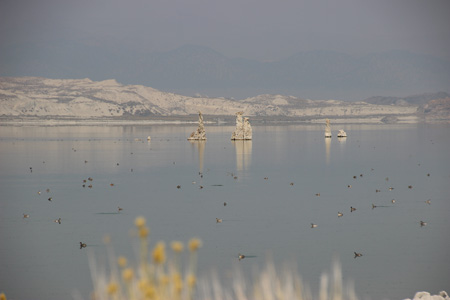
In the early 20th century, Mono Lake fell prey to the water-lust of Los Angeles. As part of the Owens Valley project, the streams that fed the lake were diverted to the lake’s vampiric municipal neighbor to the south. (Yes, I have an opinion.) Working for decades, the Mono Lake Committee managed to get the diversions stopped, and the state had developed a plan to restore the lake to 1950ish levels. Unfortunately, it takes water to do that, and the recent drought has seen the lake drop even further.
The Mono Lake Committee Visitor Center is in downtown Lee Vining, right on 395. They have great information, gifts, and an excellent book selection. During the summer season they offer tours and events. Definitely check them out–and consider donating.
North of Lee Vining is the Mono Basin Visitors Center, managed by the California Parks Service (their excellent bookshop is contracted.) During the summer season the center is open every day but Tuesday. After Labor Day, it’s open Thursday-Monday until October 2, when it closes for the season. Also a great resource, the center sits on a bluff that overlooks the lake. Check it out.
